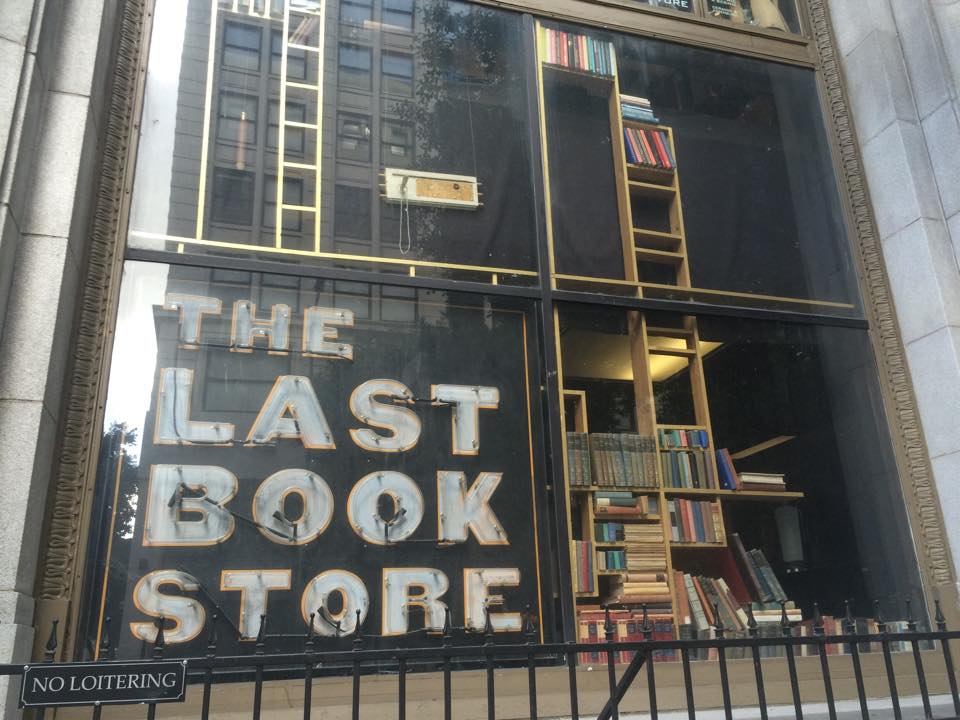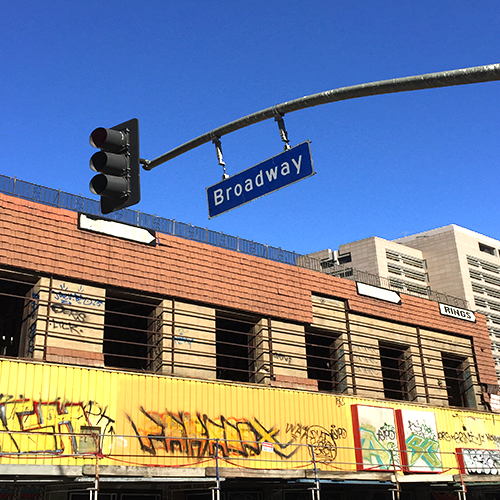12-years-ago, finding art in Downtown Los Angeles wasn’t all that common. But today, every person in all of Los Angeles who rides the Metro or the DASH bus, has the opportunity to always have a piece of art with them; all due to a changing Downtown LA.
In 2003, Nic Cha Kim founded Gallery Row, an arts and culture district through parts of the Historic Core, Skid Row and Fashion District in Downtown Los Angeles. Prior to Gallery Row, there were only three art galleries in all of Downtown LA. Now, there are over 40 galleries just in Gallery Row itself.
“None of this existed,” Kim said. “There was no nightlife in Downtown. There were not even street lamps that were turned on.”
Kjell Hagen, Kim’s best friend, owned Inshallah Gallery on Main Street, one of the three existing galleries in Downtown, but it was on the more dangerous side of town.
“That’s where land is cheap, where you can make a lot of noise and there is nobody to complain,” Kim said. “One night, we were walking around and I just looked at all of these empty storefronts and thought ‘these could be businesses and they should be art galleries’,” Kim said.
At the time, there were very few businesses or even people living in Downtown, but people were about to move in. Of the people who were already living in Downtown, most of them were artists, Kim said.
From there, Kim and Hagen joined the Downtown Los Angeles Neighborhood Council (DLANC), which gave them the platform to speak. The two of them worked their way up and eventually proposed Gallery Row to the DLANC. In July 2003, the City Council motion passed and that fall, ‘Gallery Row’ signs were installed on the streets.
“[Gallery Row] exposed [Downtown] to the rest of Los Angeles,” Kim said. “People on the West Side were afraid of Downtown. So what Gallery Row did was really change the perception of what Downtown is to those who didn’t live there and knew very little about it, and for the most part were too scared to even come.”
However, what really changed the way people viewed Downtown was when the Downtown LA Art Walk started, about a year after Gallery Row. It originally was a branch under Gallery Row, but soon became too big and became its own organization.
“Art Walk legitimized Downtown as a safe zone, as a cultural district,” Kim said. “[It’s about] safety in numbers. So, you kind of hear about this cool thing and kids are going; that’s not enough. But when 15,000 people are going, that will get you in your car.”
Since then, art has become a vital part of Los Angeles, especially Downtown. Two years ago the Los Angeles Department of Transportation (LADOT) felt the intersection of art and transportation was so crucial that they started talking to the art community in Downtown. Soon, the idea for a TAP Card design competition was formed.
Qathryn Brehm, Executive Director of the Downtown LA Art Walk, said that when the LADOT approached Art Walk about bringing both art and transportation together, they welcomed the TAP Card design competition idea with open arms.
“[It] proved that transit and art can work together and make our experience more enjoyable,” Brehm said. “[The] competition took the integration of art and public transit to another level by putting art in the pockets of every LADOT rider. This is actually something that has never been done anywhere in the world.”
There were four judges of the competition: two members of LADOT and two art gallery owners, one of whom was Nic Cha Kim.
The competition was only open to LA Artists and they received around 265 submissions from over 150 artists. Two local LA artists won, David Lomeli and Kristie Kam, and their designs on the TAP Card were just unveiled at the Downtown LA Art Walk Lounge.
 LADOT TAP Cards (Photo from LADOT)
LADOT TAP Cards (Photo from LADOT)The two designs, while very different, both depict Downtown Los Angeles. Lomeli’s design features more than two-dozen activities and locations that add character to Downtown Los Angeles. Kam’s design is much more historical themed, which honors Los Angeles’ immense past.
Kam is very proud that her design was picked as one of the winners. She said that as an artist, she is always thinking about how others will perceive her work. So, when the competition resulted in her work, it was a form of validation knowing that her work would become both approachable and practical.
“My design will be in the hands of thousands of riders,” Kam said. “If I go on the train and someone pulls out their card, I get to be like ‘Hey, that’s my design! Enjoy it!’”
Transportation has always been a big issue in Los Angeles, even more so when over 30,000 people flock to Downtown the second Thursday of every month for the Downtown LA Art Walk.
While LADOT has suffered for many years, they have been working very hard to improve the public transportation system for everyone in Los Angeles, not just Downtown.
John Gobis, Associate Vice President of Ilium Associates, a transit marketing company, has had LADOT as a client for 24 years.
“It’s been a big progression in what went on during that period of time,” Gobis said. “We didn’t have subways or half the infrastructure we have here today. It’s been a nice transition, but it’s not totally there yet. These sort of things take hundreds of years.”


